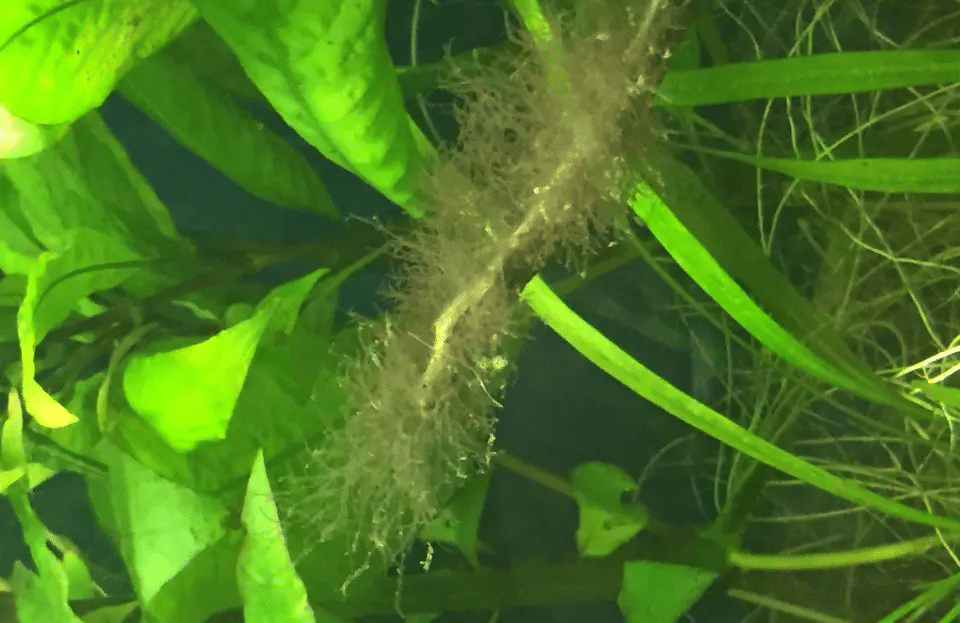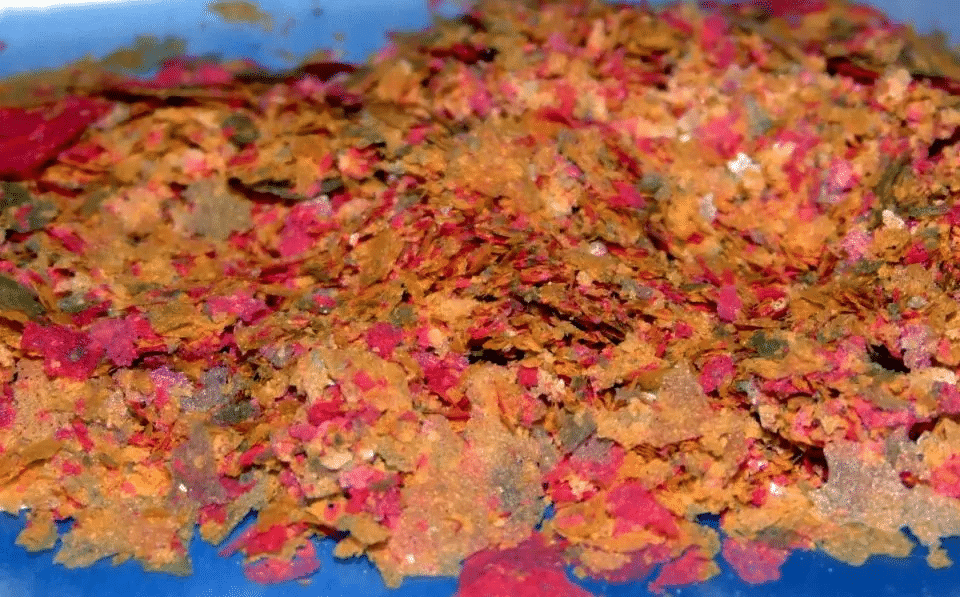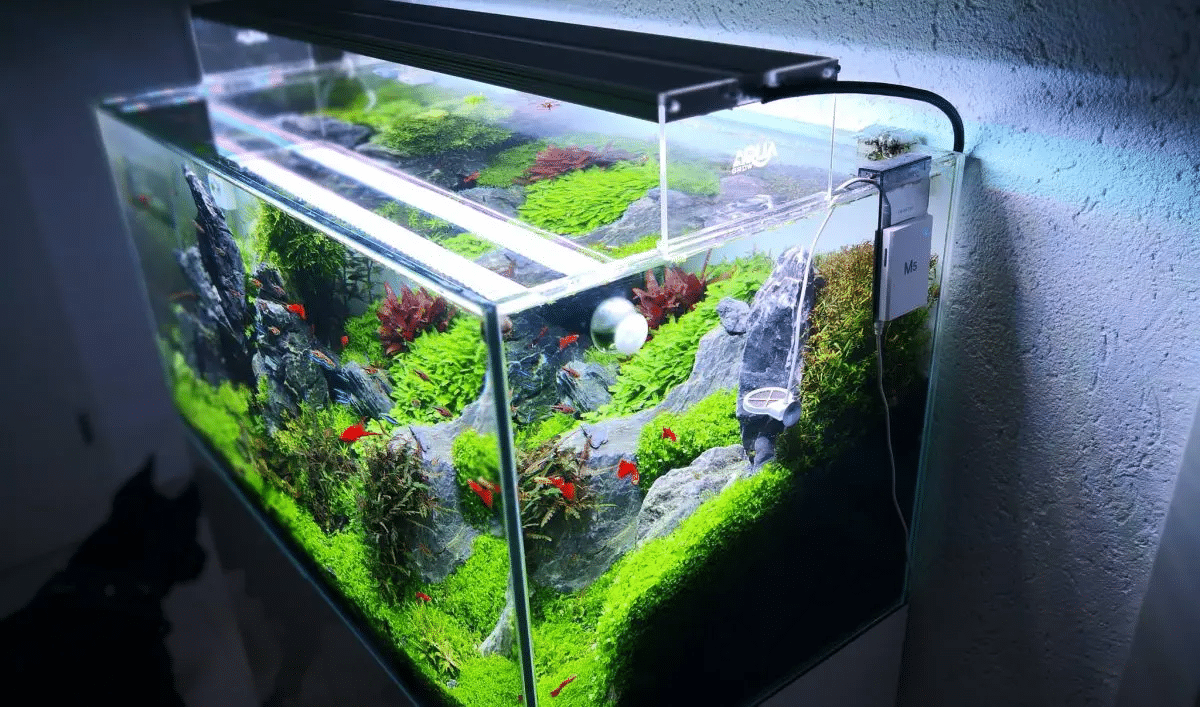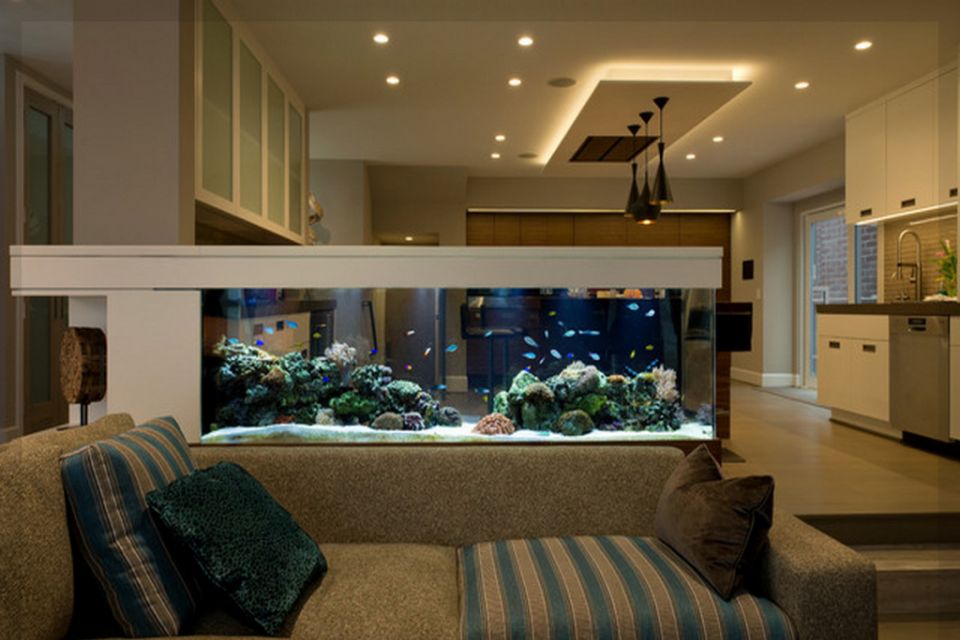
Anyone who invests a lot of money and effort in their own aquarium wants a result that meets their own requirements without blemishes. Of course, most aquarists therefore regard an infestation of unsightly green algae as a burden that needs to be removed.
If there is an infestation of green algae in the aquarium, there are several methods that can effectively combat and eliminate the problem depending on the cause. It often does not play a major role which type of green algae is present in the tank. Why green algae develop in your aquarium and what you can do to remove them permanently is shown in the following aquarium guide.
Table of Contents
What are green algae in an aquarium anyway?
Green algae belong to the umbrella term of algae. This includes all plants that cannot be classified as higher plants or mosses. The green algae are counted to the group of chloroplastidae.
Green algae occur particularly when the nutrient balance of a corresponding ecological system is either in deficit or in surplus. They reproduce both sexually and asexually. The latter occurs during cell division.
There are over 8000 species of green algae. They are mainly found in fresh water, but occasionally also in salt water, on damp soils and as vegetation on trees.
Green algae are neither toxic nor harmful. They are often used as food or to refine food. Due to the partly high iodine content, however, caution is required. In general they are a source of food for higher organisms.
In the aquarium, however, they are often regarded as weeds, at least if they occur in large quantities. However, it should be emphasized that green algae are important for the ecological balance in the aquarium and cannot be completely avoided. They are part of the system, which is not necessarily visible to the naked eye.
The green alga is found in various forms. These result in corresponding appearances, which however have a striking green colour in common.

Which green algae are there in the aquarium and what do they look like?
In the aquarium green algae are often found as threads floating or sticking flat to panes. Small green dots on the pane are also common to most aquarists.
Among the green algae, thread algae are a frequently occurring variant. They are characterised by long, soft and quickly disintegrating filaments.
Another variant is hair algae, which together form soft cushions and can reach 4 cm in length individually.
Lint algae are usually visible on the leaves of the plants in the aquarium. They are typically seen here as short threads.
Fur algae are difficult to remove. They cover the plants in the pool as well as decoration etc. over the entire surface.
The particularly stubborn Cladophora sp. shows ramifications and appears bushy.

Why do green algae develop in an aquarium?
There are numerous reasons why green algae are created in the aquarium. It is necessary to search for the cause of green algae. Often this lies in the water of the aquarium. In many places this shows increased levels of nitrate and/or phosphorus. Silicic acid is another factor that promotes the formation of green algae in the aquarium
Before doing so, however, it should be ensured that no other algae species are present in the aquarium, so that the measures can be limited to green algae. The most important feature of this is the characteristic green colour of these algae.
It is recommended to first check the water for excess or deficiency of nutrients. Based on this, the use of fertiliser can be adjusted. It may be necessary to change the amount or the fertilizer used.
The Co2 balance of the aquarium must also be taken into account. If necessary, a Co2 system should be purchased here to create the required condition.

Concrete measured values are essential in order to be able to take sensible action against green algae
- Nitrate should be 10-25 mg/l.
- For potassium, 5-10 mg/l are advisable.
- Phosphate is ideally between 0.1 mg/l and 1 mg/l.
- The magnesium content should be below 10 mg/l.
- Iron is to be levelled off at 0,05 mg/l to 0,2 mg/l. It should be started with 1/3 of the amount of iron fertilizer specified by the manufacturer.
- With regard to the oxygen content in the water, 20-30 mg/l should be used. This can be determined by means of a long-term test together with the test reagent.
These readings can be taken with basic and affordable equipment. A simple test set is all that is needed to reliably obtain the required data regarding the values in the tank.
If the water values are brought into the target state, an improvement of the algae problem can be expected quickly.

Too much food makes green algae grow in the aquarium!
Another explanation may be overfeeding. Feed that is superfluous sinks and rots, resulting in nitrate. This can accelerate the formation of green algae. If there are deposits at the bottom of the tank, this is a clear signal to reduce feeding. In addition, dry food is preferable to frozen food, as less phosphate is released into the water. You can find out more about the different types of food for your aquarium in our large aquarium fish food comparison.

The partial water change was omitted
Furthermore, an improper or not performed water change can cause the problem. This should be done weekly and regularly. If this is not guaranteed, impurities remain which serve as an ideal breeding ground for the green algae in the aquarium.
The water of the pool should be changed 30-50% weekly. The aquarium can be cleaned of green algae manually. The decoration articles should also be observed here. However, the limits can be reached quickly, as the manual removal of green algae is time-consuming. If algae are stuck on objects over a large area, it is possible to boil them – the green algae are then completely removed.

Filter is incorrectly set
It is also important to correctly calibrate the aquarium filter. If too little water is cleaned, more nitrate will accumulate in the aquarium water. If the flow rate is too high, a nutrient deficiency will occur as important nutrients are flushed out. Both scenarios lead to a deficiency or a surplus and thus promote the development of green algae.
Too much fertilizer in the aquarium
Green algae in the aquarium can be caused by the fertilizer. On the one hand, this can be caused by the fact that too little fertilizer is added to the aquarium, which in turn causes a nutrient deficiency in the aquarium. On the other hand, too much fertilizer can also promote the growth of green algae (surplus). For green algae, this surplus of fertilizer serves as an excellent source for growth and prosperity. They can absorb large quantities of it, which has serious consequences for the aquarium.

The aquarium is too strongly illuminated
Incorrect lighting is another cause of green algae growth. If it is too short or longer than necessary, the growth of green algae is promoted. This is because the process of photosynthesis of the aquarium plants is disturbed. The algae are given optimal conditions to develop due to the lack of nutrients.
Care should be taken not to illuminate the aquarium for more than 8-10 hours per day. Modern LEDs or three-band tubes should be used for this purpose. Direct sunlight should be avoided urgently. On the one hand, this favours the formation and spread of green algae to a great extent, on the other hand too intensive radiation is harmful to the creatures in the aquarium. If the tank is located at a window, curtains or the like should be provided accordingly. On the other hand, moderate daylight can also be used as a light source for the aquarium. However, this is not suitable for completely planted aquariums, as the flora naturally has high demands for constant and specific lighting conditions.

There are too few fast-growing plants in the aquarium
If too few fast-growing plants are used in an aquarium, it is quite possible that this stock is not able to consume an existing amount of nutrients. In this case an excess of nutrients is created, which creates the optimal conditions for the growth of green algae.
It should therefore always be ensured that sufficient fast-growing plants are used in the aquarium to compensate for any nutrient surplus, so that green algae in the aquarium do not provide a basis for growth.

Step by step guide: Remove green algae in the aquarium
Especially for laymen it is helpful to have a concrete approach at hand. The following instructions allow you to proceed step by step against green algae and to get your own aquarium under control. There are 10 sensible steps to be distinguished:
1.) Check the location of the aquarium
If it is located at a window, make sure to screen off direct sunlight. Daylight can be used to a moderate extent as a light source for the pool. Then, of course, the rest of the aquarium lighting must be adjusted accordingly (not recommended for planted tanks). The lighting of the aquarium itself is ideally provided by modern LEDs.
2.) Check water values
The regular checking of the aquarium water values can be regarded as an early warning system, which draws attention to the occurrence of a nutrient surplus/deficiency. In general, the above mentioned limits for micro- and macronutrients should be strictly adhered to. Thus, an infestation of green algae in the aquarium can usually be avoided completely.
3.) Perform partial water change
Normally the water should be changed 30-50% weekly. If there is an infestation of green algae in the aquarium, this partial water change can be increased to 50-60%. This is recommended when there is a nutrient surplus in the tank and leads to correspondingly poor results in the event of a nutrient deficiency – in this case, of course, change less water (30%).
4.) Remove green algae manually
During the water change the green algae can be removed by hand. The bare hands or a rough wooden stick can be used for this.
Especially the windows are mostly affected and need thorough cleaning. This can be done with the help of a so-called magnetic scraper. We show you how to clean your aquarium panes without scratching them in our aquaristic guide article.
During cleaning, it is also possible to check whether food residues have been deposited on the bottom of the aquarium. If this is the case, the feeding should be reduced. Feed residues should be sucked off/trapped in any case.
5.) Clean the decoration
The decoration of the aquarium should also be cleaned of green algae. These can be manually freed from green algae and in case of a stubborn carpet formation they can also be boiled off, whereby the green algae are completely destroyed.
6.) Check filter and flow rate
Green algae often form in the aquarium, especially through the aquarium filter. In any case, the filter should be cleaned at least every 6 months. Here we show you how to clean the aquarium filter.
It is also essential to check the flow rate of the filter. Green algae often form in pools with strong currents and in this case often directly at the filter outlet. If you can detect green algae at the filter outlet and in the direct vicinity (e.g. on plants and decoration), the filter flow rate should be reduced in any case. Gradually by 25% with subsequent checking of the green algae formation at the next partial water change.
7.) Use fertilizer
The nutrient balance should be checked after testing the water values and adjusted if necessary. If there are deviations between the tested values and the optimum, these should be compensated by using fertiliser. A Co2 plant can also work wonders for this. Especially red aquarium plants often need additional Co2, which is supplied by such a system.
8.) Use fast growing plants
The plants in the aquarium should be of a fast growing nature. This avoids a surplus of nutrients which would favour the formation of green algae. Furthermore, fast-growing plants compensate for a nutrient surplus by a high consumption of nutrients. In the best case, 80% of the basin floor should be planted.
9.) If possible use predators
Green algae in the aquarium can also be fought particularly effectively by predators. Green algae can be quickly reduced by selecting certain predators.
In any case, the welfare of the animals and the behaviour of the existing animals in the aquarium should be the main focus. Additional green algae predators can only be used if the animals are compatible with the existing stock and if the aquarium allows for additional stocking and the size of the animals. Especially predators of algae, such as typical barbel and loach species, often become much too large, especially for small aquariums.
Usually amano shrimps, crabs, certain types of catfish and snails are used. Siamese red mullet is also a reliable and proven species in the fight against green algae.
It cannot be said often enough: before buying these animals, appropriate information should be obtained. It must be checked carefully whether the animals fit into the tank: the size of the animals, the preferred water parameters, but also the existing stocking is of great importance. You can find detailed information on this in our guide on stocking density/stocking in the aquarium.
10.) Fight green algae with chemical means
In particularly severe cases, when described methods do not show any effect, chemical means can be used. This is never recommended, as the active substances damage the entire aquarium ecosystem and overdoses have fatal consequences for living beings and plants. Many of these agents are highly contaminated with chemicals and are more likely to cause harm than any concrete benefit. They should never be used.
If the means used are acceptable, copper should be mentioned as the ingredient that poses the greatest risk. Tetra AlgoStop is an agent that is used frequently. Here, a certain weekly amount should be used, which is applied for 4 weeks. This can be adjusted accordingly if further use is required.
What do you need to consider when following the step-by-step instructions?
Individual steps may have to be repeated until the ecological balance is achieved. In addition, this is necessary if the measures laid down lose their effectiveness. An aquarium is a sensitive ecosystem that is constantly changing.
The basic equipment of the aquarium is also important. This includes fast-growing plants with high nutrient uptake and predators of green algae. On the basis of this, further measures can be taken with the help of the obligatory measured values.
This may seem complicated at the beginning, so that the fight against green algae appears to be an almost insoluble task. However, a routine is quickly established, so that after a certain period of time the control of green algae is no longer a problem and is effortless. Until then, trial and error and learning is necessary.
Chemical auxiliaries should in any case only be regarded as the last lifeline if all else fails. We would like to point out the potential damage that can occur in your aquarium if such chemical agents are used incorrectly.
Conclusion: Green algae in the aquarium
If the painstakingly prepared aquarium is infested with green algae, this is often a great nuisance. If the correct way to deal with the problem is not known, the fight against the algae can take a long time and possibly cause further damage.
However, it should be stressed that the causes follow certain patterns and can therefore be systematically combated and eliminated. The10-part step-by-step instructions explained in the course of the text make it possible to get the plague under control quickly and easily. This requires some experimentation, dedication and work, but is worth the effort.
The be-all and end-all is the obligatory water analysis, which should take place regularly. If there is a nutrient deficiency, more fertiliser that meets the requirements should be used. If, on the other hand, there is a surplus, the fertiliser should be reduced.
In addition, a suitable location, adequate lighting, water change with cleaning of the pool, adapted feeding, fast-growing plants and predators must be considered.
Finally, it must be pointed out again that green algae can never be completely avoided. Nevertheless, they can be reduced to such an extent that they cannot be seen and are therefore not visually disturbing. Furthermore, it should not be forgotten that they are not harmful and on the contrary benefit the ecosystem of the basin.
First and foremost, one should be patient with all this until the procedure has become routine and is effortless. It is especially important never to lose the fun and not to be too hard on yourself when you make mistakes. A master has not fallen from the sky to this day.
The reward for studying this subject carefully and keeping your own aquarium in good shape is a tank in ecological balance, where you can enjoy yourself every day a new.



